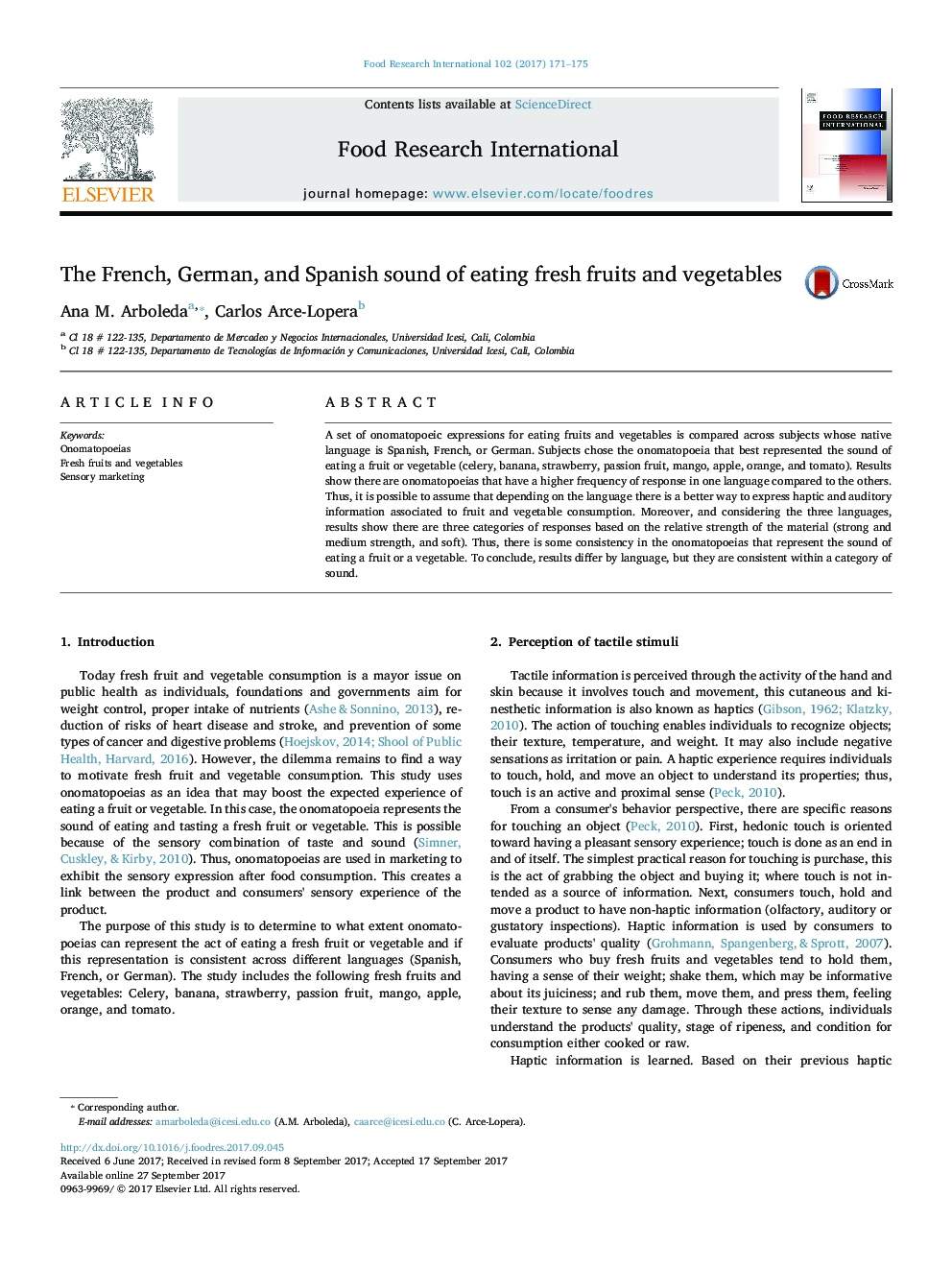| Article ID | Journal | Published Year | Pages | File Type |
|---|---|---|---|---|
| 5767773 | Food Research International | 2017 | 5 Pages |
â¢Onomatopoeias can represent the sound and texture of eating a fruit or vegetable.â¢Onomatopoeias that represent the idea of eating a fruit or vegetable are grouped by how soft or hard is the material.â¢The best onomatopoetic expression for eating a fruit or vegetable differs by language (Spanish, German, or French).
A set of onomatopoeic expressions for eating fruits and vegetables is compared across subjects whose native language is Spanish, French, or German. Subjects chose the onomatopoeia that best represented the sound of eating a fruit or vegetable (celery, banana, strawberry, passion fruit, mango, apple, orange, and tomato). Results show there are onomatopoeias that have a higher frequency of response in one language compared to the others. Thus, it is possible to assume that depending on the language there is a better way to express haptic and auditory information associated to fruit and vegetable consumption. Moreover, and considering the three languages, results show there are three categories of responses based on the relative strength of the material (strong and medium strength, and soft). Thus, there is some consistency in the onomatopoeias that represent the sound of eating a fruit or a vegetable. To conclude, results differ by language, but they are consistent within a category of sound.
Graphical abstractDownload high-res image (122KB)Download full-size image
